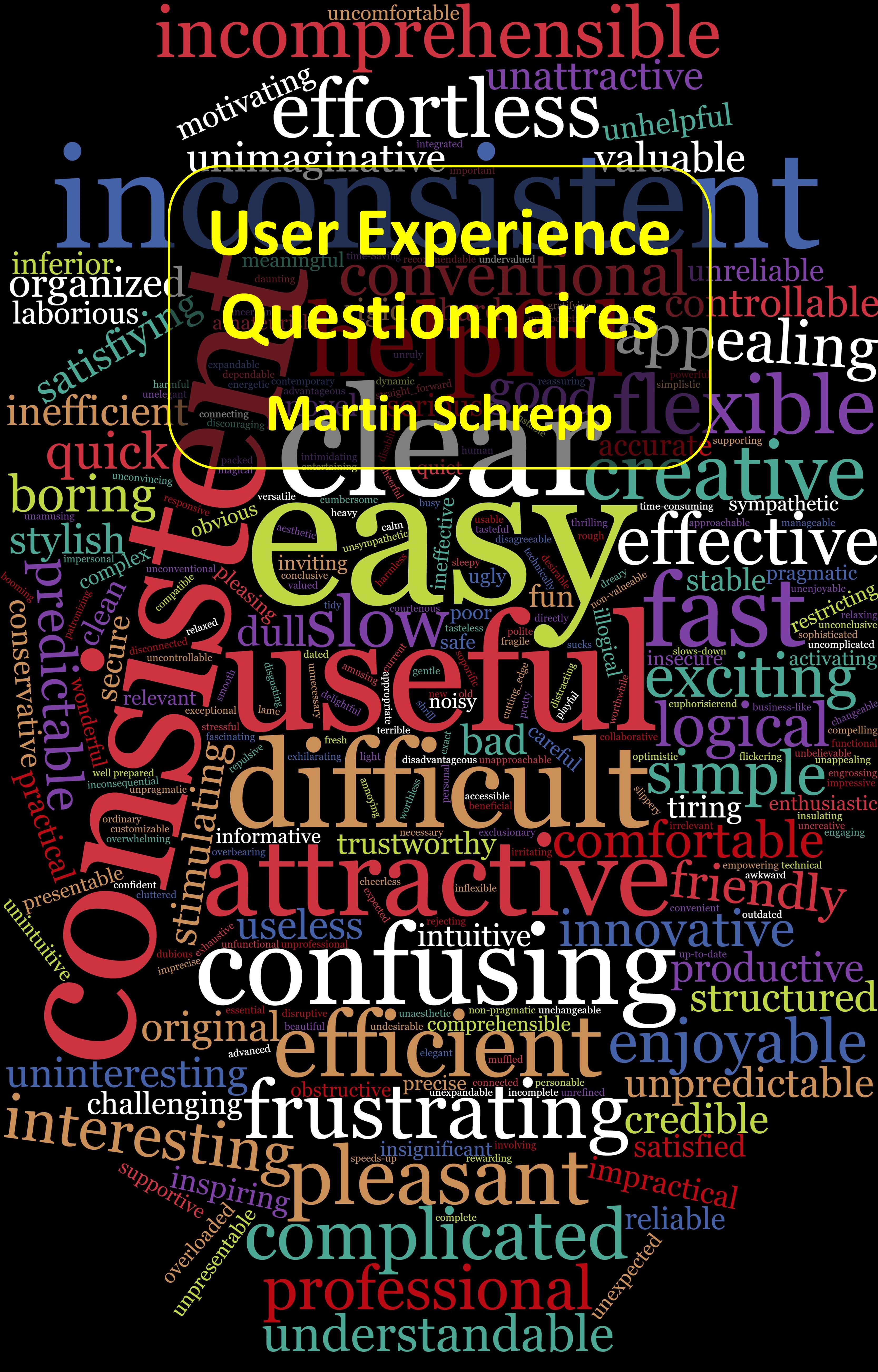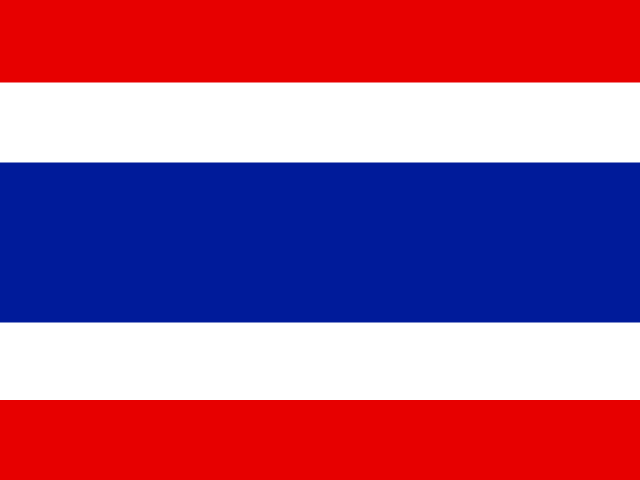

The scales of the questionnaire cover a comprehensive impression of user experience. Both classical usability aspects (efficiency, perspicuity, dependability) and user experience aspects (originality, stimulation) are measured.
Overall impression of the product. Do users like or dislike it?
Is it easy to get familiar with the product and to learn how to use it?
Can users solve their tasks without unnecessary effort? Does it react fast?
Does the user feel in control of the interaction? Is it secure and predictable?
Is it exciting and motivating to use the product? Is it fun to use?
Is the design of the product creative? Does it catch the interest of users?
New presentations, papers or activities concerning the UEQ.
Paper that analyzes the semantic similarity of UX items with ChatGPT.
Paper comparing UEQ-S, SUS and UMUX-Lite questionnaires.
Conference Paper investigating the impact of usage behaviour and demographics on UEQ-S, SUS and UMUX-LITE.
Paper describing an application of the UEQ to evaluate UX of a mobile health app.
Report concerning the interpretation of standard deviations for UEQ scales and the estimation of required sample sizes.
Report describing an enhanced heuristic to detect suspicious responses.
Paper concerning the Spanish translation.
Paper evaluating the Croatian translation.


Click on cover to buy at Amazon
The construction and basic application scenarios of the UEQ are described in a number of scientific papers.
The construction and basic application scenarios of the UEQ are described in a number of scientific papers.
The UEQ is currently available in more than 30 languages.

German
Authors: Bettina Laugwitz, Theo Held, Martin Schrepp

English
Authors: Bettina Laugwitz, Theo Held, Martin Schrepp

Spanish
Authors: Manuel Pérez Cota, Jörg Thomaschewski, Maria Rauschenberger

Portuguese
Authors: Manuel Pérez Cota, Ramiro Gonçalves

Turkish
Author: Baris Siri

Indonesian
Author: Harry B. Santoso

Chinese

French
Author: Alain Tuor

Italian
Author: Mauro Zenoni

Japanese

Dutch
Author: Adriaan Dekker

Russian

Estonian
Author: Jana Kadastik

Slovenian
Authors: Matjaž Debevc, Saša Jazbec, Julija Lapuh Bele

Swedish

Polish
Authors: Justyna Gerłowska, Katarzyna Grabowska-Aleksandrowicz, Urszula Skrobas, Konrad Rejdak

Greek
Author: Zacharias Kargas

Hindi
Author: Neha Parashar

Persian
Authors: Arefeh Heshmati, Peyman Rezaei-Hachesu, Taha Samad-Soltani

Bulgarian
Author: Assen Tzekin

Czech
Author: Martin Valenta

Malay
Authors: Noorlida Daud, Ahmad Zamzuri Mohamad Ali

Thai
Author: Supalak Khemthong
Author: Henning Brau
Author: Henning Brau
Author: Henning Brau

Kannada
Author: Henning Brau

Marathi
Author: Henning Brau
Author: Henning Brau
Author: Ali Maki Isa Ahmed Abbas
Author: Henning Brau
Authors: Mate Juric, Franjo Pehar, Nikolina Peša Pavlović
Author: Henning Brau
Author: Henning Brau
Author: Henning Brau
Authors: Peter Strauch, Eva Pankova, Jozef Hanč
Authors: Apolline Mallet, Sumi Ledain

























Tap on a flag to get more information.
This section list all materials required to work with the UEQ. Everything is completely free of charge.
Describes the most important facts concerning the usage of the UEQ.
The User Experience Questionnaire in all language versions as PDF.
Two Excel-Sheets that make the analysis of your results easy.
A short version of the UEQ with just 8 items is available for some special application scenarios.
The questionnaire (list of items) of the short version of the UEQ.
An Excel-Sheet that make the analysis of your results easy.
Try the UEQ from the perspective of a survey participant.
The UEQ+ is a modular extension of the User Experience Questionnaire. It contains a larger list of UX scales that can be combined by a UX researcher to build a concrete UX questionnaire adapted to the concrete research question. In this sense the UEQ+ is not a UX questionnaire, it is a tool to build concrete questionnaires optimized for special evaluation scenarios.
Contact us in case of questions. We promise we won't bite!

Dr Andreas Hinderks is a user experience expert with a Diploma in Computer Science and a Master of Science in Media Informatics from the University of Applied Science Emden/Leer. He received his PhD in computer science with a focus on UX Management from the University of Sevilla. With over 20 years of experience in the industry, Dr Hinderks has held various management roles as a UX manager, business analyst and programmer. In addition to his professional work, he has been actively involved in research activities related to UX management, UX questionnaires, and UX research methods since 2011. Currently, he is working as a freelancer on various projects related to UX management.

Dr. Martin Schrepp studied mathematics and psychology at University of Heidelberg. He received a diploma in mathematics 1990 and a Ph.D in psychology 1993. Since 1994 he works in various roles at SAP SE. His work experience includes writing technical documentation, software development and user interface design. Main research interests are the application of insights from cognitive science to the design of interactive products, accessibility and the development of methods for evaluation and data analysis.

Dr. Thomaschewski became Full Professor at the University of Applied Sciences Emden/ Leer (Germany) in September 2000. His research interests are human-computer interaction, and agile software engineering. Dr. Thomaschewski founded the research group “Agile Software Development and User Experience” at the University of Applied Sciences Emden/ Leer in 2009. He also has extensive experience in user experience training, user experience management, UX questionnaires, agile methods, IT analysis, e-learning, and consulting.
Contact:
Team UEQ
Martin Schrepp
Schwetzinger Straße 86
68766 Hockenheim
Germany
We use icons from Font Awesome by Dave Gandy - http://fontawesome.io
Copyrights © 2018 All Rights Reserved by UEQ Team